Ashraf Pahlavi
Princess Ashraf ol-Molouk Pahlavi[1] (Persian: اشرف الملوک پهلوی, Ašraf Pahlavi, 26 October 1919 – 7 January 2016) was the twin sister of Mohammad Reza Pahlavi, the last Shah of Iran (Persia), and a member of the Pahlavi dynasty. She was considered the "power behind her brother" and was instrumental in the 1953 coup which led to him taking the throne.[2] She served her brother as a palace adviser and was a strong advocate for women's rights.[3] Following the Iranian Revolution in 1979, she lived in exile in France, New York, Paris and Monte Carlo and remained outspoken against the Iranian Islamic Republic.[2]
| Princess Ashraf | |||||
|---|---|---|---|---|---|
| Shahdokht | |||||
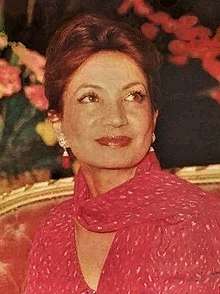 | |||||
| Born | 26 October 1919 Tehran, Persia | ||||
| Died | 7 January 2016 (aged 96) Monte Carlo, Monaco | ||||
| Burial | 14 January 2016 | ||||
| Spouse | Ali Ghavam
( m. 1937; div. 1942)Ahmad Shafiq
( m. 1944; div. 1960)Mehdi Bushehri ( m. after 1960) | ||||
| Issue |
| ||||
| |||||
| House | Pahlavi | ||||
| Father | Reza Shah | ||||
| Mother | Tadj ol-Molouk | ||||
Early life
Ashraf Pahlavi was born in Tehran on 26 October 1919, five hours after her brother Mohammad Reza. Her parents were Reza Pahlavi, a military commander, who would become the Shah of Persia, and Tadj ol-Molouk, the second of his four wives.[3] She had 10 siblings and half-siblings.[3]
In the early 1930s, Ashraf Pahlavi, her older sister Shams, and their mother were among the first significant Iranian women to cease wearing the traditional veil.[3]
Ashraf Pahlavi was not permitted to attend university and instead was married in 1937, at the age of 18, to Mirza Khan Ghavam, whose family was politically allied with her father.[3]
Politics
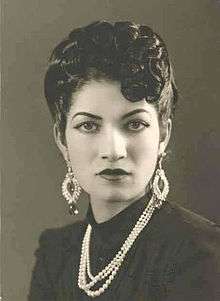
1953 coup
In 1953, Ashraf Pahlavi played an important role in Operation Ajax as the one who changed Mohammad Reza Shah's mind in giving consent to the CIA and SIS to start the operation.[4] The Shah had originally opposed the operation and for a while resisted accepting it. In early 1953, she met with CIA agents who asked her to talk to her brother since she was the only one who was able to influence him. As historian Stephen Kinzer's book All the Shah's Men recounts, "Ashraf was enjoying life in French casinos and nightclubs when one of Kermit Roosevelt's best Iranian agents, Assadollah Rashidian, paid her a call. He found her reluctant, so the next day a delegation of American and British agents came to pose the invitation in stronger terms. The leader of the delegation, a senior British operative named Norman Darbyshire, had the foresight to bring a mink coat and a packet of cash. When Ashraf saw these emoluments, Darbyshire later recalled, "her eyes lit up and her resistance crumbled."[5] By her own account, Pahlavi was offered a blank check if she agreed to return to Iran from her enforced exile in France, but refused the money and returned of her own accord.[6]
Some historians argue that the coup would have occurred with or without Ashraf Pahlavi's persuasion of her brother. In an International Journal of Middle East Studies article, writer Mark Gasiorowski states that the Shah "was not consulted about the decision to undertake the coup, about its manner of execution, or about the candidate chosen to replace Mossadegh"[7] and that the coup was instead largely executed by the United States and others looking to undermine Mossadegh's leadership.
Political activities

Ashraf Pahlavi was a strong supporter of women's rights in Iran and the world during her brother's reign. In 1967, Pahlavi worked with the United Nations as the Iranian delegate to the Commission on Human Rights as well as the Economic and Social Council.[8] In 1975, she was heavily involved with the International Women's Year, and addressed the United Nations.[3]
Though an instrumental force in legitimizing gender reforms, her philosophy on gender was not particularly introspective: "I confess that even though since childhood I had paid a price for being a woman, in terms of education and personal freedom, I had not given much thought to specific ways in which women in general were more oppressed than men."[9] By her own account, she was a strong supporter of the rights of women to basic life necessities such as "food, education, and health"[10] and was not a radical reformist. She cited "chronic apathy"[10] from many governments as the underlying issue that prevented women's rights reforms from being implemented around the world.
Ashraf Pahlavi's women's rights stance was called into question after the publication of her 1976 The New York Times op-ed piece, "And Thus Passeth International Women's Year." In a March 1976 article in The Nation, writer Kay Boyle criticized Ashraf for her touting of International Women's Year as succeeding in widening the global vision of sisterhood, while approximately 4,000 of the Princess's own "sisters" were political prisoners in Iran with virtually no hope of a military trial.[11]
In her 1980 memoirs, Pahlavi acknowledges the poor conditions of women in Iran and expresses concern, as she writes, "the news of what was happening to Iran's women was extremely painful…[they] were segregated and relegated to second-class status…many were imprisoned or exiled."[12]
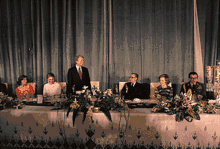
Additionally, Pahlavi worked as an activist for human rights and equality. She was an advocate for the international spread of literacy, especially in Iran, where her brother Mohammad Reza Shah was a major proponent of the anti-illiteracy movement. She served as a member on the International Consultative Liaison Committee for Literacy.[12]
Ashraf Pahlavi was the target of an unsuccessful assassination attempt in the summer of 1977 at her summer home on the French Riviera, during which fourteen bullets were fired into the side of her Rolls Royce automobile. Her Lady-in-waiting was killed but Pahlavi left the scene unharmed.[1][13][14]
After the 1979 revolution, Ashraf Pahlavi asked David Rockefeller to support her brother Mohammad Reza's attempts to find asylum.[15]
She also attacked U.S President Jimmy Carter and the United Nations Secretary General Kurt Waldheim for not giving their support to her late brother the Shah during the start of the Revolution.[14] In 1994 she attended the funeral of former president Richard Nixon.[16]
Character and finance
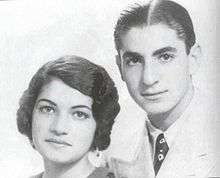
Ashraf Pahlavi argued that she was "attacked for financial misconduct" because she was engaged "in the administration of various organizations".[17] By her own account, she was of limited financial means when Mossadegh sent her into exile in Paris.[18] However, in later years she was said to have accumulated a large fortune. She attributed her wealth to increases in the value of lands that she had inherited from her father Reza Shah, and income from inherited businesses.[3] Nevertheless, it has been purported that part of the story behind the build up of her fortune may have been that during the Iranian industrial boom, which was driven by a surge in oil prices, Pahlavi and her son Shahram took 10% or more of a new company's stock gratis in return for ensuring the delivery of a license to operate, to import, to export, or to deal with the government. Government licenses were said to be given only to a few well-connected companies in each field. As a result, the need to get and keep a license became a cost that had to be met.[19]
In 1979, The New York Times reported that a document dated 17 September 1978 from Ashraf's office requested a transfer of $708,000 from her Bank Melli account to her account at the Union Bank of Switzerland in Geneva under the code name 'Sapia'.[14]
In 1980, Pahlavi wrote an article for The New York Times, in which she came out in defense of herself and her family's financial situation. In the article, she argued that her wealth was not accumulated through "ill-gotten gains" and attributed her fortune to inherited land, which "drastically increased in value with the development of Iran and the new prosperity that was there for all".[14] She asserted that many other Iranians profited from the sale of their own real estate, but were not accused of financial misconduct because of close ties to the clergy and Khomeini.[14] She also defended her brother, Mohammad Reza Pahlavi, stating that, contrary to the claims made by some Khomeini supporters, the Shah did not profit from the Pahlavi Foundation.[14] The Princess wrote that she planned to "fight these slanders with all my means and through whatever judicial means are available."[14]
Psychologically, Ashraf Pahlavi had low self-esteem when she was younger. She did not like "what she saw in the mirror." She "wished for someone else's face,…, fairer skin, and more height." She always imagined that "there were so few people in this world shorter than I."[20] Perhaps this motivated her to be bold. In her memoirs she wrote:
Two decades ago French journalists named me "La Panthère Noire" (The Black Panther), I must admit that I rather like this name, and that in some respects it suits me. Like the panther, my nature is turbulent, rebellious, self-confident. Often, it is only through strenuous effort that I maintain my reserve and my composure in public. But in truth, I sometimes wish I were armed with the panther's claws so that I might attack the enemies of my country.[21]
Her brother, Mohammad Reza Pahlavi (Mohammad Reza Shah) was her closest friend. In her memoirs, she remembers looking upon him with a sense of wonder as a child, writing, "long before we reached adulthood, his voice became the dominant one in my life."[22]
Some sources mention a connection between her and drug trafficking;[23] she said: "My detractors have accused me of being a smuggler, a spy, a Mafia associate (once even a drug dealer)".[21]
Notable positions held
- Honorary President of Red Lion and Sun Society, 1944
- Chairwoman of the United Nations Commission on the Status of Women, 1965
- Iranian delegate to the United Nations Commission on Human Rights, 1967
- Iranian delegate to the United Nations Economic and Social Council, 1967
- Chairwoman of the United Nations High Commission for Human Rights, 1970[24]
- Member of the Consultative Committee of International Women's Year Conference, 1975
- President of the Women's Organization of Iran, 1967–1979
- Chairwoman of the Imperial Foundation for Social Services
- Honorary Fellow of Wadham College, Oxford
- Member of the International Consultative Liaison Committee for Literacy[24]
Marriages and children
First marriage
Pahlavi's first marriage was to Mirza 'Ali Muhammed Khan Ghavam, Nasir ud-Daula (1911–?). They were married in March 1937 and divorced in 1942. Ghavam was the Assistant Military Attaché for Iran in 1941 in Washington DC and the eldest son of H.H. Mirza Ibrahim Khan Ghavam, Qavam ul-Mulk. She had one son from her first marriage, H.H. Prince (Vala Gohar) Shahram Pahlavi-Nia (born 18 April 1940, Tehran). In 1966 he married 16-year-old Niloufar Afshar, and the couple had one son, Cyrus, in 1969. Pahlavi-Nia had another son, Amir Ebrahim (born 1974) out of wedlock with Naz Alam, a daughter of the Shah's longtime minister of court and confidante, Asadollah Alam. In 1987 Shahram and Naz had an Islamic marriage ceremony in the US Virgin Islands.
Second marriage
_%D8%A7%D8%B4%D8%B1%D9%81_%D9%BE%D9%87%D9%84%D9%88%D9%8A_%D8%AF%D8%B1_%D9%83%D9%86%D8%A7%D8%B1_%D9%87%D9%85%D8%B3%D8%B1%D8%B4_%D8%A7%D8%AD%D9%85%D8%AF_%D8%B4%D9%81%D9%8A%D9%82.jpg)
Pavlavi's second marriage was to (Sahib ul-Izza) Ahmed Chafik Bey (21 September 1911 – 1976). He was the director-general of Civil Aviation and fourth son of H.E. (Hazrat Sahib ul-Sa'ada) Ahmad Shafiq Pasha, the minister of the Khedivial Court of Egypt. They married in 1944 in Cairo, and divorced in 1960; he went on to a second marriage to Deloris Pianezzola, and died of cancer in 1976, in Tehran. They had two children, Captain H.H. Prince (Vala Gohar) Shahriar Mustapha Chafik (15 March 1945 – 7 December 1979), assassinated in Paris,[25] and H.H. Princess (Vala Gohari) Azadeh Pahlavi-Chafik (1951–2011).[26]
Third marriage
Pahlavi married a third and final time on 5 June 1960 (at the Iranian Embassy in Paris) to Mehdi Bushehri (1916–?), who was the Director of the Maison d'Iran (House of Iran), Paris. They had no children together, and were often separated while Pahlavi lived in exile in New York City[14] and Mehdi Bushehri remained in Paris.[27]
In a 1980 interview with The New York Times journalist Judy Klemesrud, Pahlavi stated, "I have never been a good mother. Because of my way of life, I was not with my children very much".[14]
Exile and death

After the Revolution Princess Ashraf divided her time between Beekman Place[28] which she sold before moving to Park Avenue in New York City, Paris and in Juan-les-Pins, on the French Riviera.[1][14]
Princess Ashraf Pahlavi died on 7 January 2016 in Monte Carlo at the age of 96.[1] She had suffered from Alzheimer's disease.[29] Her death was announced by her nephew and the imperial family's head, Reza Pahlavi on his Facebook page.
Robert F. Armao, an adviser, said the cause was "old age". Armao related that Princess Ashraf died in her sleep at home in Europe, but declined to name the country, citing concern for the safety of her family.[1]
Her funeral took place on 14 January 2016 in the Cimetière de Monaco in Monaco, attended by members of the Pahlavi family, including Empress Farah Pahlavi.[30]
At the time of her death, she was the oldest living member of her family.[3]
Books
Ashraf Pahlavi wrote two books in English:
- Faces in a Mirror: Memoirs from Exile (1980)
- Time for Truth (1995)
Additionally, she wrote one book in French:
- Jamais Résignée (1981)
Her three books were published following her 1980 The New York Times article "I Will Fight These Slanders". In accordance with her promise to fight the "slanders" about her and her family, her books are largely concerned with clearing up what she viewed as misconceptions about the Pahlavi dynasty. She again addresses the questions about her personal financial situation, writing in her most widely read book, her memoir Faces in a Mirror, "I had inherited about $300,000 when my father died (and about 1 million square meters of land near the Caspian Sea, as well as properties in Gorgan and Kermanshah, which would later become extremely valuable)"[13] In the introduction to this book, Pahlavi writes that she wants "very much to explain to Western readers what they have failed to understand about the nature of Iran's culture and heritage…about the nature of the so-called Islamic revolution",[21] Generally, her books are viewed as too autobiographical and steeped in emotion to be used as serious historical references: The Library Journal called Pahlavi's Faces in a Mirror, "little more than a personalized homily on the Pahlavis' virtues and the perfidy of nearly everyone else in the world."[31]
Before the 1979 revolution, Pahlavi translated several books from French into Persian, including books on nursing and child care.[24]
Titles, styles and honours
| Styles of Princess Ashraf Pahlavi of Iran | |
|---|---|
 | |
| Reference style | Her Imperial Highness |
| Spoken style | Your Imperial Highness |
Titles
- 28 October 1923 – 12 December 1925: Her Serene Highness Princess Ashraf Pahlavi
- 12 December 1925 – 11 February 1979: Her Imperial Highness Princess Ashraf of Iran
- 11 February 1979 – 7 January 2016: Her Imperial Highness Princess Ashraf Pahlavi
Honours
National dynastic honours
.svg.png)
.svg.png)
.svg.png)
Foreign honours
.svg.png)


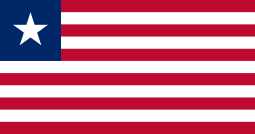


- Honorary doctorate from the Brandeis University (1969, Waltham, Massachusetts, USA)[39][40]
References
- Liam Stack (8 January 2016). "Ashraf Pahlavi, Sister of Iran's Last Shah, Dies at 96". The New York Times. ISSN 0362-4331. Retrieved 8 January 2016.
- "Iranian Princess Ashraf, shah's twin sister, dies at age 96". Yahoo News. Archived from the original on 9 September 2017. Retrieved 5 February 2017.
- Brian Murphy (8 January 2016). "Ashraf Pahlavi, twin sister of Iran's late shah, dies at 96". The Washington Post. ISSN 0190-8286. Retrieved 8 January 2016.
- "Shah of Iran's twin sister dead at 96". CBC. Retrieved 8 January 2016.
- Kinzer (2003), p. 7
- 'Pahlavi (1980), pp. 136–138
- Gasiorowski (1987)
- Kathleen Teltsch (22 March 1970). "She may be a Princess, but Shah's Twin is more Interested in Equal Rights". The New York Times.
- Pahlavi, Ashraf (1980). Faces in a Mirror: Memoirs from Exile. Englewood Cliffs, NJ: Prentice-Hall. p. 153. ISBN 9780132991315. OCLC 643157789.
- Pahlavi, Ashraf (5 January 1976). "And Thus Passeth International Women's Year". The New York Times.
- Boyle, Kay (6 March 1976). "Sisters of the Princess". The Nation.
- Pahlavi (1980), p. 211
- Pahlavi (1980), p. 78
- Klemesrud, Judy (23 October 1980). "Princess' book defends shah, attacks Carter". Star News. New York. N.Y. Times News Service.
- Boyd, Lyn (2000). "A King's exile" (PDF). USC. Retrieved 14 February 2013.
- Jon Gambrell (14 January 2016). "Princess Ashraf of Iran: The Shah of Iran's twin sister". The Independent. Retrieved 8 February 2016.
- Pahlavi (1980), p. 217
- Pahlavi (1980), p. 125
- Keddie (1981), p. 172; see also Hoveyda (1979), p. 144
- Pahlavi (1980), p. 153
- Pahlavi (1980), p. xv
- Pahlavi (1980), p. 14
- Fardust (1998), p. 121
- Harrelson, Max (9 March 1970). "Human rights chairman pursues racial equality". The Free Lance Star. New York. AP. Retrieved 5 November 2012.
- "Bakhtiar escapes assassination attempt". Daily News. Paris. AP. 17 July 1980. Retrieved 4 November 2012.
- "Tribute to Princess Azadeh Shafigh Pahlavi (1951-2011)". Iranian. Retrieved 18 November 2012.
- McElwaine, Sandra (29 April 1980). "Shah's sister living in a shadow world". The Miami News. Retrieved 7 November 2012.
- Tate, Mateo. "An Eight-Story Manhattan Mansion With a History of Famous Residents". www.mansionglobal.com.
- "Ashraf Pahlavi, twin sister of Iran's last shah, dead at 96". AFP. 9 January 2016. Retrieved 8 February 2016.
- "Obsèques d'Ashraf Pahlavi: Farah Diba en deuil, adieu discret à la soeur du Shah". Pure People (in French). 19 January 2016.
- Snider, Dave. "Faces in a Mirror (Book Review)". Library Journal. 15 June 1980. 1380-1381
- "The Princess Ashraf Ruby Tiara". Pinterest. 23 November 2013.
- "Coronation Of The Shah And Farah Diba. Téhéran- 27 Octobre 1967- Lors..." Getty Images.
- "Iran Politics Club: Mohammad Reza Shah & Shahbanu Farah Pahlavi Photo Album 2 – Ahreeman X".
- Pinterest, Decorations worn in the image
- Flickr, Decorations also worn in the image
- Alamy Limited. "Mohammad Reza Pahlavi, 26.10.1919 - 27.7.1980, Emperor Of Iran 1941 Stock Photo, Picture And Royalty Free Image. Pic. 48540944". Alamy.
- "Het geheugen van Nederland".
- زنان پهلوی. احمد پیرانی. نشر به آفرین. ۱۳۸۳. پ۱۷۳
- "Honorary Degree Recipients - Board of Trustees - Brandeis University". Retrieved 12 January 2017.
Further reading
- Fardust, Hussein (1998). The Rise and Fall of the Pahlavi Dynasty: Memoirs of Former General Hussein Fardust. Translated by Ali Akbar Dareini. Motilal Banarsidass. ISBN 8120816420.CS1 maint: ref=harv (link)
- Gasiorowski, Mark (1987). "The 1953 coup d'etat in Iran". International Journal of Middle East Studies. 19 (3): 261–286. JSTOR 163655.CS1 maint: ref=harv (link)
- Hoveyda, Fereydoun (1979). The Fall of the Shah. New York: Wyndham Books.CS1 maint: ref=harv (link)
- Keddie, Nikki, R. (1981). Roots of Revolution: an Interpretive History. New Haven, CT: Yale University Press. ISBN 9780300026115.CS1 maint: ref=harv (link)
- Kinzer, Stephen (2003). All the Shah's Men: an American Coup and the Roots of Middle East Terror. John Wiley & Sons. ISBN 978-0-471-67878-6.CS1 maint: ref=harv (link)
- Pahlavi, Ashraf (1980). Faces in a Mirror – Memoirs from Exile. Englewood Cliffs, NJ: Prentice Hall.CS1 maint: ref=harv (link)
External links
- "Princess Ashraf Pahlavi of Iran - Site". Archived from the original on 21 July 2012.
- On her personal website, one can find biographical information about the Princess and her family, as well as information concerning her humanitarian efforts.
- "Princess Ashraf Pahlavi". Foundation for Iranian Studies. Bethesda, MD, USA. Archived from the original on 22 July 2012. Retrieved 9 March 2013.
- The Foundation for Iranian Studies is a non-profit institution dedicated to educating the public about Iran. Princess Ashraf served on the Board of Trustees.